Common and available before many other species are out, this is a good eating mushroom but difficult to identify for the novice forager and must be well cooked before consumption. Great care should be taken identifying this fungi.
Home / Mushroom Guide /
The Blusher
The Blusher
| Mushroom Type | |
| Common Names | The Blusher (EN), Amanita Wridog (CY), Muchomor Czerwieniejący (PL), Piruló Galóca (HU) |
| Scientific Name | Amanita rubescens |
| Season Start | May |
| Season End | Nov |
| Average Mushroom height (CM) | 9-12 |
| Average Cap width (CM) | 8-12 |
Cap
8-12 cm. Flesh coloured to light brown to a darker red/brown sometimes with a yellow flush and covered in off-white to grey scales. Spherical to convex to flat.
Stem
9-12 cm long, 1-2.5 cm diameter. Scaly and off white to grey/red/brown below the skirt, generally smoother and whiter above.
Skirt
Superior. The skirt is an important identification tool as the top has fine grooves or striations running from the stem outwards.
Volva
Young Blushers have an obvious volva but as the mushroom matures the bottom of the stem is bulbous rather than being marginate.
Possible Confusion
Can be confused with the toxic Panthercap (Amanita pantherina), pictured. The main difference is that the Blusher has lines or striations on its skirt running from the stem out, the Panthercap skirt is smooth. Other differences are the Blusher has a lighter cap, the scales on the cap are off-white to grey rather than white, the Blusher stem is bulbous at the bottom the Panthercap growing from a volval sack and has a rim or ‘gutter’ at the top of the volva (marginate) and finally, the Blusher ‘blushes’ red when damaged or exposed to air.
The Grey Spotted Amanita (Amanita excelsa), generally has a darker cap but is very similar looking but this should not be a problem as it is edible.
Care should be taken when identifying Amanitas.
Spore Print
White. Ovoid.
Taste / Smell
Faint then becoming slightly acrid when fresh, tasty when cooked. Must be well cooked before eating as it contains a toxin that is destroyed when heated.
Frequency
Very common.



 (52 votes, average: 3.75 out of 5)
(52 votes, average: 3.75 out of 5)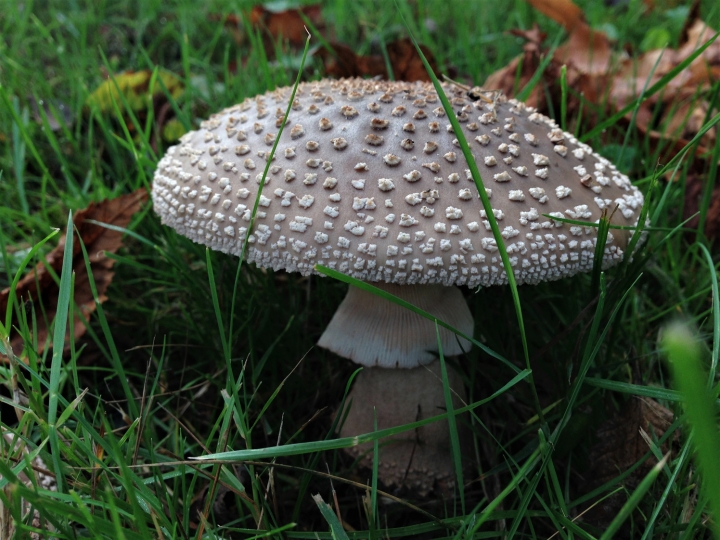
















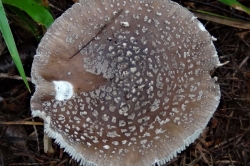
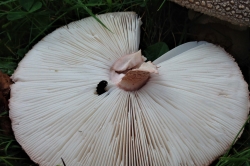
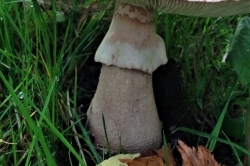
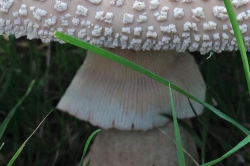
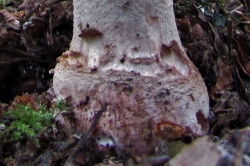
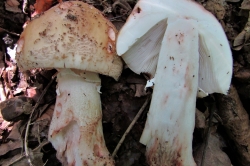
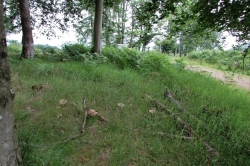
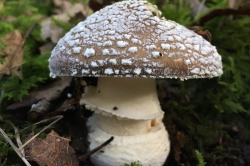




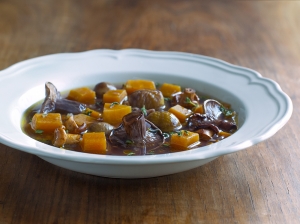






Leave a Reply